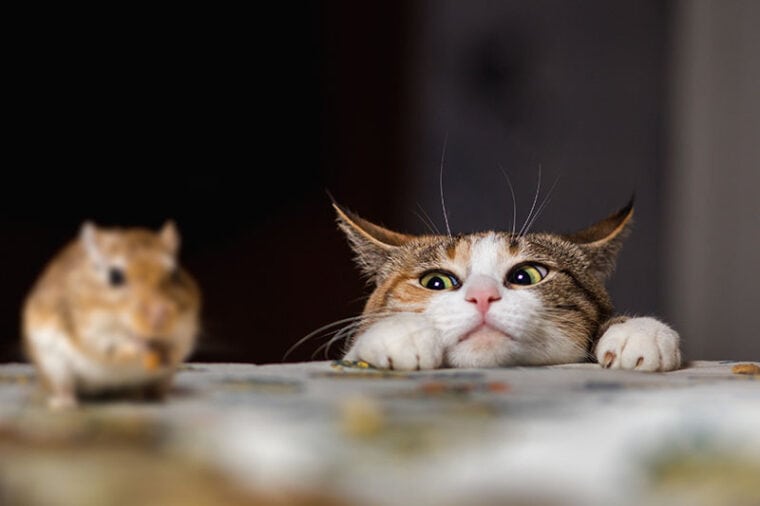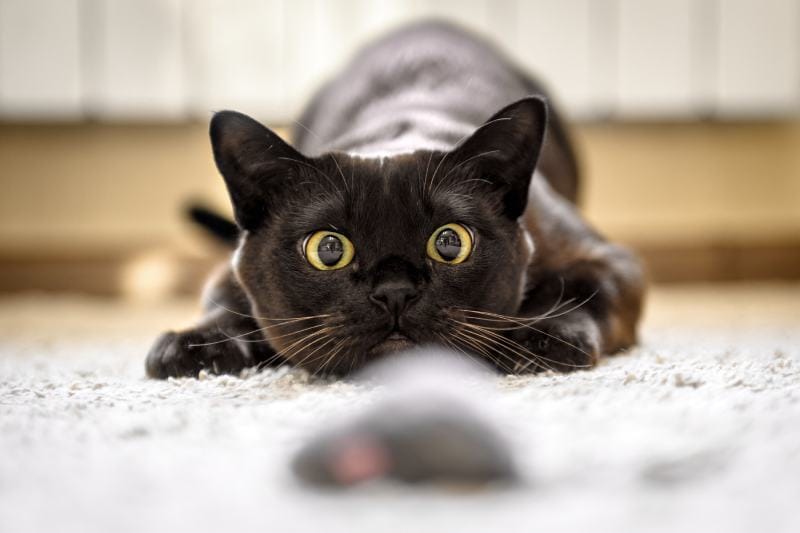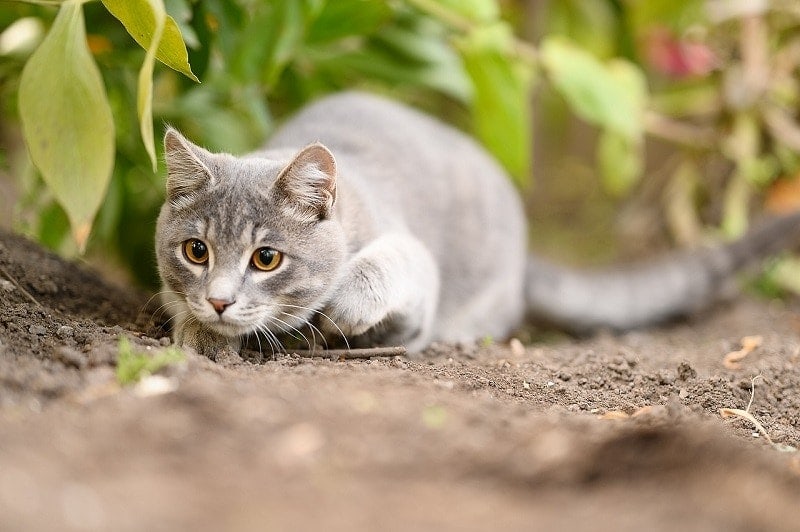
As much as cat owners might probably know the answer to this question based on experience, many people still don’t know how cats hunt and kill mice—or even why they do it despite being well-fed. This article will further discuss cat hunting behavior as well as their hunting techniques. Keep reading to learn more.

The 3 Main Techniques Cats Use to Hunt and Kill Mice
There are several hunting techniques that cats utilize while hunting. However, the techniques may vary depending on their prey.
1. Stalk and Pounce
This is a commonly observed technique in cats. But don’t think it’s an easy feat; it takes a lot of patience and skills. Once the cat gets the prey in its sight, it gets closer to the ground.
If, by any chance, the prey tries to run, the cat will advance while adjusting its speed to that of the prey. Cats can simply freeze in position with their paws out in midair to avoid detection. When the mouse moves, the cat squats, hides its hind paws, and prepares for take-off.

2. Fishing
Sure, fishing is a hard skill to master, even for humans. It requires a lot of patience and the ability to navigate water. So, as a cat hunts, it tries to avert its reflection away from water as it waits for its prey. As soon as the cat is ready, it can quickly hook its paw into the water and pry the prey out.
But how does this apply to mice? Cats sometimes hunt mice from their hideout holes. They will sit near the hole, remaining still. They will watch for any shadows or movement coming from the hole. Once the mouse is visible, the cat will use its paw like a hook to snag the prey.
3. Ambush
The ambush technique is slightly different from the stalk and pounce method. Stalking often requires several stops before the kill. The ambush happens in one strike. But it still takes practice and skill. The cat will find its prey and remain motionless. Once the cat has a clear shot of the mouse, they will strike.


Cat Hunting Behavior
Domestic cats are well known for their stealthy approach while hunting mice. They will usually keep still or as silent as possible, and this is accompanied with persistence and patience.
Cats always utilize their keen sense of sight, smell, and hearing while hunting. Once they select a good spot (usually next to a mouse nest), they will use the available cover and wait for the mouse to appear. The smallest movement or slight rustle will be detected by the cat, whereupon it will stalk or freeze.
If the cat believes that the prey will move toward them, it will pause and wait. Sure, the prey might not innocently move toward the cat, but the cat will make short and quick advances toward the prey without barely making a sound. The cat will also crouch low and tense itself.
Usually, before a cat makes its final pounce, it will sway its head from side to side to get a 3D dimension angle of the prey, thus judging the exact distance for an accurate pounce. For mice, the final pounce tends to be a downward action, but it can be complicated when hunting birds.
This can be attributed to the fact that cats tend to anticipate that their prey might fly upwards. However, they can also gauge the bird’s reaction and be ready to swipe at it with both front feet. This hunting technique is usually seen in kittens while playing around.
Nevertheless, if cats are allowed to prey on wild animals, their dominant prey would be small mammals. Granted, they can attack birds, but since they are harder to catch, they may not be a priority meal for cats. Instead, they may opt for insects.

Why Do Domestic Cats Hunt?
Granted, cats hunt for natural reasons. However, many people are still puzzled as to why well-fed domesticated cats still feel the urge to hunt. Several research studies have been done to try and explain the possible reasons why cats do so.
Below are the two most plausible reasons:
Since most domesticated cats gladly partake in vegetable diets, they often complement their diets with a carnivorous meal. While this nutritional requirement can be found in branded foods, it’s never enough. This is perhaps why cats hunt the prey of their choice to complement their diet.

Summary
A typical cat will snap a mouse’s neck to paralyze it. The mouse eventually dies from a heart attack or internal bleeding. Usually, if a cat catches a mouse, it may play with it until it perishes from injuries sustained. However, if it is aiming for a bird, it will hunch its hind paws in a position to jump for the prey.
Whichever the case, there isn’t much that you can do when a cat is hunting. It is a ruthless killer when it needs to supplement its diet with meat. But the cat can choose to kill and present you with a gift of dead prey. If it does, ensure that you properly dispose of it.
Featured Image Credit: Sergey Zaykov, Shutterstock





